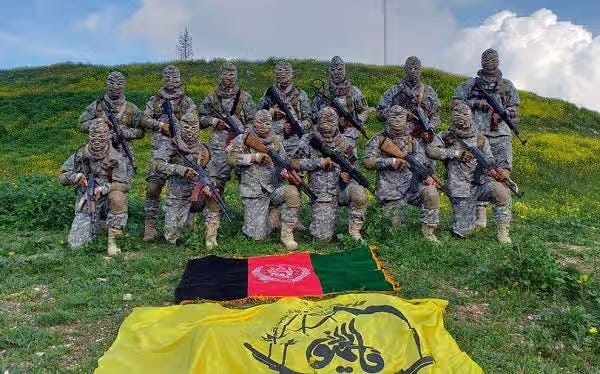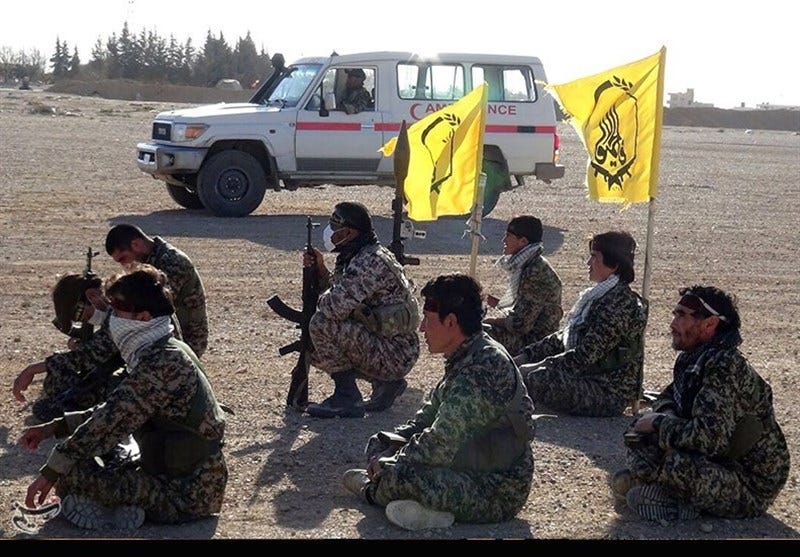Modern Slavery: Afghan Refugees Exploited by Iran in Assad’s War
How Iran Turned Afghan Refugees into Tools of War in Syria
As Bashar al-Assad fled Syria, the Iranian regime announced that so far approximately 4,000 Iranian citizens, primarily military personnel, had been evacuated from the country. On December 10th, during a press conference in Tehran, the Iranian government’s spokesperson stated, “Efforts will continue until the last Iranian is evacuated.”
Conspicuously absent from this statement was any mention of the thousands of Afghan refugees who had been recruited by Iran’s Islamic Revolutionary Guard Corps (IRGC) to fight in Syria over the past decade. Reports on social media suggest that many of these Afghans are now stranded in Latakia, abandoned by their Iranian and Syrian commanders—and, unsurprisingly, by Afghanistan’s ruling Taliban regime.
Why did Afghan refugees join Iran’s military efforts in Syria? Was it out of loyalty to the Ayatollahs? Highly unlikely. Was it driven by religious beliefs or sheer desperation? The answer lies in the broader context of Afghan migration and the exploitation they faced in Iran.
A Legacy of Migration: Afghans in Iran
For over 50 years, Iran has been a major destination for Afghan refugees. From the Soviet invasion of Afghanistan to the civil war, and through the Taliban’s first and second regimes, millions of Afghans have crossed into Iran, which shares a 572-mile (971-kilometer) border with Afghanistan. Many of these refugees, lacking resources to flee further, saw Iran as their only option.
Today, an estimated six million Afghan migrants live in Iran, according to the Iranian Bureau for Aliens and Foreign Immigrant Affairs. However, their lives are far from easy. Most undocumented migrants rely on smugglers to cross the treacherous mountainous border, and even those who enter legally face significant challenges renewing their residency permits.
Living as a Refugee in Iran
Iran is one of the least welcoming countries for refugees. Even documented migrants are denied access to most public services, including healthcare, education, and banking. They are restricted in where they can live and are limited to certain jobs, such as construction, agriculture, waste collection, and welding. This narrow list changes frequently, often forcing Afghan refugees into a precarious existence.
For undocumented migrants, the situation is even worse. With over four million Afghans living in Iran illegally, many work for meager wages and live in constant fear of arrest. Children born to Afghan parents in Iran often face insurmountable barriers to obtaining identification documents, perpetuating their statelessness.
Joining the IRGC: The Ayatollahs’ Solution
In 2014, as the Syrian Civil War intensified, the IRGC established the Fatemiyoun Brigade, a militia composed of Shia Afghan refugees. Officially, the brigade was tasked with defending Shia holy sites in Syria, but in reality, it served as a proxy force for Iran, fighting anti-Assad groups. By late 2017, the brigade reportedly consisted of 10,000 to 20,000 fighters.
Recruits were lured with promises of residency and financial benefits. Families of those killed were promised housing, monthly salaries, and official identification documents. Disabled fighters were granted five-year residency permits, while others received one- or two-year permits, which required renewal through further battlefield deployments.
This arrangement was appealing to many Afghan refugees, who faced grim prospects in Iran. For them, fighting in Syria offered a chance—however slim—of improving their lives.
It Sounds Eerily Like Modern Slavery
Over the years, I interviewed several Afghan migrants who were recruited to fight in Syria for the Iranian regime. As I reflect on their stories—the desperate conditions that forced them to fight for a foreign government in a distant war, and the neglect and mistreatment they faced afterward—I am increasingly convinced that this falls squarely within the definition of modern slavery.
Take Mojib, a Shia Hazara refugee from Bamyan. Arrested in Mashhad in 2016 for living without legal documents, he was sent to a border camp for deportation. There, an IRGC officer offered him a lifeline: enlist to fight in Syria in exchange for legal residency in Iran. Driven by desperation, Mojib agreed. After returning uninjured in 2019, he received only a one-year residency permit, which was not renewed. Left with no options, he was ultimately forced back to Afghanistan.
Ahmed, another Afghan asylum seeker, received his recruitment notice via text message. The official communication outlined financial rewards and legal benefits for joining the Fatemiyoun Brigade. Like Mojib, Ahmed was desperate to improve his circumstances and those of his family. But the promises came at a steep cost—he lost an eye in the war. Now living in Iran, Ahmed faces the same harsh restrictions imposed on other Afghan migrants. He has no control over where he lives, no freedom to choose his work, and no identification documents for his child. When he voiced his frustrations, his IRGC handler dismissed his complaints, calling him “lucky” to be allowed to remain in Iran at all.
Ahmed’s story is far from unique. By 2017, the Fatemiyoun Brigade had suffered catastrophic losses—2,000 fighters killed and 8,000 wounded, according to brigade commander Zohair Mojahed. These men, enticed by false promises of stability and dignity, were treated as disposable tools of war.
Their experiences reveal a dark reality: Afghan refugees in Iran were exploited not just for their labor but for their lives, coerced into a cycle of violence and abandonment. It’s hard to call this anything but modern slavery.
Why Not Iranians?
Yes, Iranians were sent to fight as well—but not the general public. The Iranian regime didn’t shy away from glorifying martyrdom and jihad, often framing it as a noble sacrifice for Islam. However, sending large numbers of Iranian citizens to fight abroad risked exacerbating domestic discontent. Over the past decade, protests have erupted with slogans condemning the regime’s costly foreign interventions in Syria, Lebanon, and Gaza. Critics have decried the diversion of national resources to fund wars in other countries, further fueling public frustration.
Afghan refugees, on the other hand, were an ideal choice for the regime. Marginalized and desperate, they were easy to exploit. Promised residency and financial stability, many felt they had no choice but to fight for a cause they neither understood nor believed in. Yet for most, the promises remained unfulfilled, and the reality of life after the battlefield was a grim reminder of their expendability.
The Forgotten Fighters
Now, as Assad’s regime crumbles and Iran withdraws its forces from Syria, the Afghan fighters who risked their lives for Iran’s agenda find themselves stranded and abandoned. While Iranian personnel are being evacuated, there is no word on the fate of the Fatemiyoun Brigade. These forgotten fighters, caught between Iran’s ambitions and Syria’s collapse, remain a stark reminder of the costs of exploitation and the broken promises of war.







Wow. Very interesting. Had no idea. Thanks for another excellent article
Interesting.